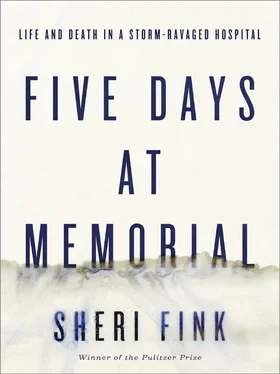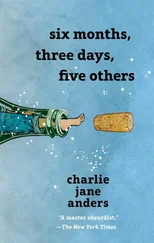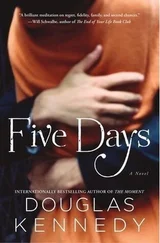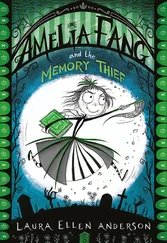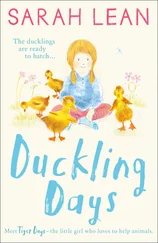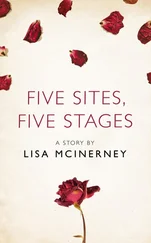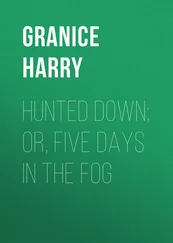When Jannie Burgess had received poor treatment from patients as a nurse at various New Orleans hospitals, she did what she felt she had to do: gritted her teeth and smiled and kept going. She had a long career, and after retirement moved into senior housing at Flint-Goodridge Apartments, the pre–Civil Rights era site of Flint-Goodridge Hospital, once the only private hospital in New Orleans where “Negro” patients could receive care and their doctors could pursue residency training. Burgess cared for an ailing brother at home and grew softer and rounder with age.
Surgery and chemotherapy had stalled her uterine cancer. She recovered and lived well for two years. In early August 2005, her legs wouldn’t carry her properly. She was admitted to Memorial to investigate the cause of her severe weakness. She had a bowel blockage. A surgeon opened her abdomen and found cancer in her liver. The tumor couldn’t be removed. “I don’t want to live on machines,” she said, and so her doctor gave her a Do Not Resuscitate order. She developed an infection, possibly as a result of the surgery, and her kidneys began to fail, possibly as a complication of the antibiotics used to treat the infection. To stay alive if her kidneys stopped working she’d need dialysis to clean her blood. Under no circumstances, she said, did she want that. The doctor discussed these preferences with Burgess, her sister, and a doting niece, then shifted the goal of her care from treating her medical problems to ensuring her comfort. She was scheduled to move out of intensive care and onto a regular medical floor as soon as a bed became available. Small doses of morphine had been ordered as needed to control any pain.
Burgess’s daughter, Linette, had lived overseas for more than two decades with her Italian husband. Mother and daughter talked frequently, but visits were rare and often did not go well. While Jannie Burgess had helped integrate New Orleans hospitals, Linette had done the same for the New Orleans Playboy Club, becoming its first black Bunny in 1973. This distinction had brought shame to the observant Catholic mother she referred to as a Holy Roller. Years of tension over various issues followed. Today’s visit was something of a reconciliation.
With the mayor demanding that New Orleanians evacuate the city, the relatives who had driven Linette Burgess Guidi to the hospital were anxious to begin their exodus west. It was time to leave. She told her mother she loved her and thanked her for all she had done to raise her and make her the woman she was. “Release, let it go,” Burgess Guidi said to her mother. She told her she’d be back to see her on Wednesday.

ALL STAFF MEMBERS assigned to work the hurricane at Memorial were to sign in by noon to pick up wristbands and room assignments. They parked their cars in multistory garages above the flood-prone streets. They emptied car trunks full of hurricane provisions onto borrowed carts and pushed them down the hospital corridors. Those with pets carried kennels and a requisite three-day supply of food to the medical records department on the ground floor, checking the animals into rooms that filled with the sounds of frenzied barking. They wrote the pets’ names on tracking forms and promised to keep them out of patient areas.
Unlike many others, Dr. Anna Maria Pou didn’t bring much with her to Memorial when she arrived early Sunday afternoon: no family members, no pets, no coolers packed with snacks and junk food. It was the surgeon’s first hurricane at the hospital, and when she arrived the activity struck her as highly disorganized. She sought the company of the experienced operating-room and recovery-room nurses and offered to help them move equipment. The main hospital, an amalgamation of the 1926 building and subsequently built wings, was separated from Memorial’s new surgical suites by a bridge that administrators feared could collapse in the storm. Pou lugged supplies and equipment from the new building to an old set of operating theaters in the main hospital. She organized the rooms so that she and any other surgeon could operate in them during the storm if necessary.
Other doctors retreated to private offices to sleep, but Pou had decided for the moment not to do that. She was there to work. “I’ll just sleep on a little stretcher with y’all,” she said to the nurses. They carried stretchers to an empty endoscopy procedure suite to create an ad hoc bedroom. Staff members set up a table and unloaded abundant, picniclike provisions, having been told to bring food for three days, the amount of time local hospitals and their employees were expected to be self-sufficient in emergencies. They watched as Pou unpacked only a six-pack of bottled water, crackers, tuna fish, and something that flashed in her hand. “What’s that?” a nurse asked Pou. “That’s a can opener,” Pou replied. Was that all she thought she needed? The nurses howled.
Water, tuna, and crackers were all Pou had been able to scrounge up at home. She didn’t cook. Although she was beautiful, funny, and sociable by nature, at age forty-nine her life revolved around her surgical career.
She hadn’t always known she would be a doctor, but even her elementary-school classmates had predicted that the caring girl with the good grades would follow in her father’s footsteps. Dr. Frederick Pou was a Dominican Republic–born, New Orleans–raised internist, well known in the community but often absent from the family’s large, two-story white colonial on Fontainebleau Drive. His wife, Jeanette, was the daughter of Sicilian immigrants. She gave birth to eleven children, and he worked tirelessly to provide for them. He treated patients in a corner house in the Bywater, a working-class neighborhood on the opposite side of town. He sometimes scheduled office appointments until ten p.m. and returned home for dinner after midnight.
Frederick Pou made weekend house calls, and his wife sent Anna Maria and her siblings along with him on alternating weekends so they could spend more time with him. In this way, Pou learned early what a doctor’s job was.
The children helped raise one another. Anna was the seventh, and her older siblings doted on her when she was little. One liked to dress her up in doll clothing and lead her across their lawn and the broad, tree-shaded street to show her off at St. Rita Catholic School. Later, as a grade-school student there, Pou listened closely to the nuns who taught her. They talked about purgatory and the importance of being good. A nun held up a picture of a snowman. That was the soul, pure and white. She drew an ugly black mark on it. That was what sin did.
Pou went to a Catholic all-girls high school, Mercy Academy, where the mascot was a high-stepping poodle. Pou and her siblings were popular, attractive kids, petite in stature like their father, the smallest in his family. Most of the siblings strongly resembled one another with brown hair, prominent eyelids, and full brows that contrasted with peach-hued skin. Anna had the wide, dimpled smile of a prom queen. She frequented the Valencia Social Club, mingling with other local teens who stopped by after school for a snack at the diner and partied to the beat of live bands in the evenings.
As Pou grew older, it became her turn to help mother the younger ones, driving them to after-school activities and helping prepare meals. Taking care of others was a family value, taught and modeled by her parents, a way of doing good. When friends of Pou’s younger brothers came over to play, she treated them sweetly. Some of the boys developed crushes on her.
At Louisiana State University, Pou had started out pre-med, but then changed her major against her father’s advice. Instead of a doctor she became a medical technologist in a hospital laboratory, running tests for infections. This switch in her professional direction disappointed her father. He told her she wouldn’t be satisfied.
Читать дальше
